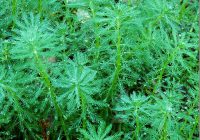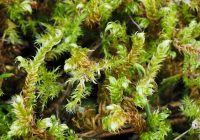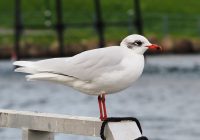Dr Phil Smith’s Wildlife Notes
November 2018
It has been known for centuries that rainfall on the coast is much lower than a few miles inland, yet I have never heard this reflected in regional, let alone national weather forecasts. So yet again, the default forecast for the Northwest of “frequent heavy showers” was wrong day after day. The result was another dry month here with measureable rain on 11 days but not in sufficient quantity to recharge the sand-dune water-table which remained static throughout.
With plants and insects settling down for the winter, I was surprised to hear that Trevor Davenport and Pete Kinsella had found Green Shieldbugs at Freshfield and Blundellsands respectively. These were the brown pre-hibernation form that I hadn’t seen before. Trevor also saw several Common Darters at Mere Sands Wood as late as 19th. The mild conditions also meant lots of plants were still in flower. On 16th, Patricia Lockwood and I logged Green Alkanet, Harebell, Bugloss, Hairy Tare, Sticky Stork’s-bill and the rare Hybrid Stork’s-bill within a few metres at Ravenmeols. There were still opportunities to find new species for the coast, the most unwelcome being the invasive alien Parrot’s-feather drawn to my attention in a dried-up pond at Ravenmeols. This aquarists’ throw-out, from South and Central America, is now widespread in southern Britain and is spreading north, despite the fact that it is illegal to cause it to grow in the wild. Also new was a small bush of the garden-escape, Summer Jasmine, that I spotted at Wicks Path, Formby Point.
Autumn is the best time to look for mosses and liverworts but many are challenging to identify. One such is Mamillate Plait-moss (Hypnum andoi) which I was convinced I had found last year on oak bark at Freshfield Dune Heath. However, there were no capsules, these being required to separate it from similar mosses. This time I managed to find some with capsules, the identification being confirmed by the vice-county recorder, John Lowell. Although this species is quite widespread inland, it was the first record for the Sefton Coast. While surveying scrapes at Ainsdale Sand Dunes National Nature Reserve, Natalie Hunt reported the rare Large Hook-moss which rejoices in the scientific name Pseudocalliergon lycopodioides, a real tongue-twister. Josh Styles and I went to see it on 25th, tracking down plenty of this impressive plant in two adjacent slacks. Bryophyte expert, Des Callaghan, confirmed the importance of this find. Having declined nationally by 88%, the Large Hook-moss is now rated as “Critically Endangered”. Des has seen it before at Ainsdale but not since 2010. We hope to record the extent of the population, describe the habitat it prefers and the management needed to conserve it.
Much of the work to maintain the unique flora and fauna of the Sefton Coast takes place at this time of year. Dry conditions allowed the usually flooded borrow-pits at Cabin Hill NNR to be mown. This should benefit a wide range of plants, including marsh-orchids and the rare Flat-sedge. Natural England also dug scrapes in the frontal dunes to help our sadly declining Natterjack Toads. Meanwhile, on the adjacent Altcar estate, a large area of species-rich grassland was mown, while invasive Japanese Rose bushes were removed from a 900m stretch of frontal dunes, thereby creating bare sand for our iconic Northern Dune Tiger Beetles and Sand Lizards. Gems in the Dunes organised volunteer work parties to clear scrub, while my “Buckthorn Bashers” met four times, cutting Sea Buckthorn re-growth in two large slacks and their surrounds north of Sands Lake, Ainsdale. During one of my recording visits to the Devil’s Hole, National Trust staff were setting up another tube-well to help monitor water-table changes. A freshly dead Common Shrew was an interesting find there.
There wasn’t much time for bird-watching but I did catch up with a wintering Mediterranean Gull at Southport Marine Lake. All the way from Siberia, Lancashire’s fourth Dusky Warbler was found by Andrew Spottiswood on 16th in a remote corner of Ainsdale NNR. Several went to see it but I wasn’t tempted in view of the long walk.
I went to some excellent meetings during November. Gems in the Dunes organised a well-attended bryophyte training course led by Des Callaghan. We were shown the very rare Petalwort, Sea Bryum and Dyffryn Moss in slacks maintained scrub-free by the Buckthorn Bashers. John Dempsey presented the results of the Sandwich Tern roost counts on the Ainsdale/Birkdale shore in August and September. The peak of 840 was lower than the two previous years, possibly due to adverse weather or shortages of small fish offshore, though disturbance, especially by dogs, could have been a factor. Finally, the Botanical Society of Britain & Ireland had its annual meeting at Edge Hill University. Over 100 members, including encouraging numbers of younger people, enjoyed superb facilities and some excellent talks. One by Josh Styles described his North West Rare Plant Initiative to re-introduce extinct and declining species to appropriately managed sites in the region, some being on the Sefton Coast.




